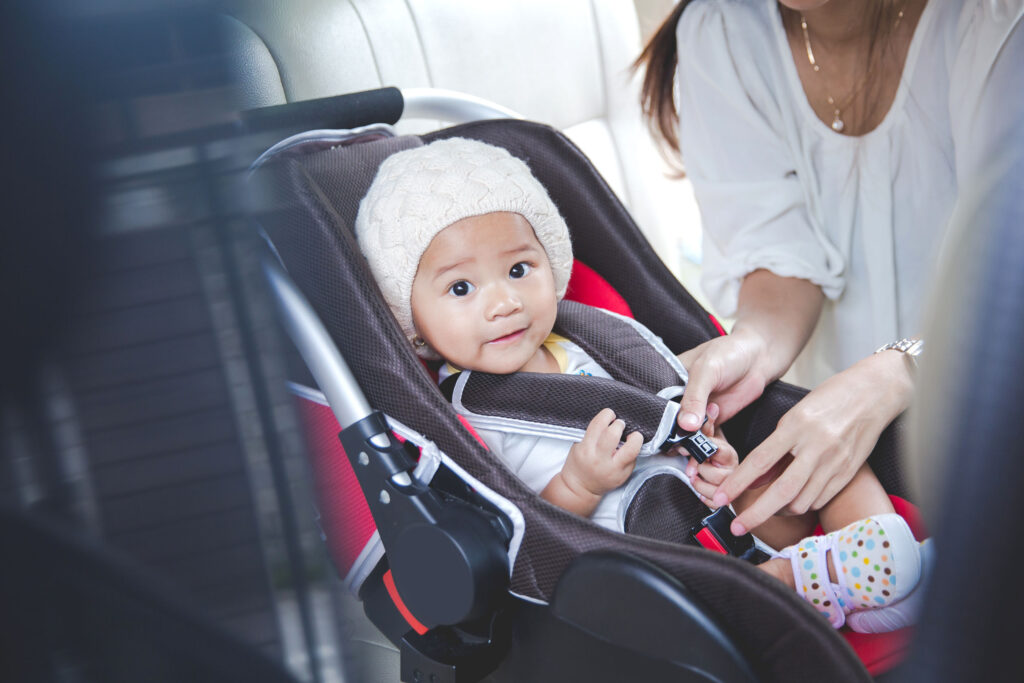
Several key public safety measures went into effect in Washington on January 1, including new 2020 Washington car seat laws. The updated legislation supports Washington’s Target Zero initiative to reduce injuries and deaths attributed to improper use of child restraints in vehicles. Car accidents remain one of the leading causes of death for children under the age of 14.
Protecting your children’s safety is of the utmost importance. Find out how the new 2020 Washington car seat laws will affect you and your child with this helpful guide and child restraint safety tips from Lerner and Rowe Injury Attorneys.
2020 Washington Car Seat Laws: Your Questions Answered
Senate House Bill 1012 establishes new standards for how long children should be restrained in car seats and booster seats depending on their age and height. Overall, the new regulations are more strict about when a child is able to sit in the front seat of a car and how long children must remain in a car seat or a booster seat.
How Do Car Seats Save Lives?
Car seats and booster seats are both crucial safety devices in protecting against traumatic injuries. In addition to being smaller than adults, children’s bones are softer and their internal organs are surrounded by less padding, which can increase the risk of broken bones and internal bleeding caused by an accident.
Child restraint systems come into contact with some of the strongest parts of the body, minimizing the risk of pediatric injuries by spreading crash forces over a wider area. A Centers for Disease Control and Prevention (CDC) study found that children in car seats are 71% less likely to suffer injury and 28% less likely to be killed in an accident than children wearing traditional seat belts.
Is a Booster Seat the Same as a Car Seat?
Many people are unaware that there is a difference between a booster seat and a car seat. In fact, booster seats and car seats provide specific protections for children of different ages and sizes.
A car seat, as defined in the Federal Motor Vehicle Safety Standards, is a child restraint system that restrains, seats, or positions children up to 80 pounds. Standard car seats offer more cushioning and are intended for infants and toddlers, often in a rear-facing capacity.
A booster seat, on the other hand, is a backless child restraint system that provides forward restraint but does not provide additional support to a child’s head or neck. Booster seats allow older children to face forward in the car safely.
When Can a Baby Sit Forward-Facing in a Car Seat?
Under the new 2020 Washington car seat laws, all children under the age of two must be restrained in a rear-facing car seat. Children over two years old can remain in a rear-facing car seat until they reach the highest weight or height allowed by the seat’s manufacturer. The car seat should also be installed in the back seat of the car whenever possible.
Children over the age of two may sit in a forward-facing car seat as long as the car seat is equipped with a harness. Harnesses must restrain the child’s pelvis and upper torso and should be made of a flexible, non-rigid material. The National Highway Traffic Safety Administration (NHTSA) recommends using a car seat with a five-point harness for optimal safety.
When Can I Move My Child to a Booster Seat?
In accordance with the updates to the Revised Code of Washington (RCW 46.61.687), children can be moved to a booster seat beginning at the age of four. However, it is worth noting that age alone should not be the deciding factor when deciding whether your child is ready for a booster seat.
If your child exceeds the manufacturer height and weight limit on their car seat and they are at least four years old, transitioning to a booster seat is the best option to keep your child safe.
However, if your child is four years old or older and still under the height or weight limits of their car seat (typically between 40-65 pounds), you may want to keep them in the car seat longer than the law requires.
When Can My Child Stop Using a Booster Seat?
One of the most notable changes to child restraint regulations comes in the form of its requirements on the use of booster seats. The new 2020 Washington car seat laws mandate that all children under 4’9” must continue to ride in a booster seat until they have reached the designated height requirement. Once the child is 4’9” or taller, they must still be secured by a properly fitted seat belt.
The recommendation came down from the American Association of Pediatrics in response to data indicating that children who do not use booster seats or who are secured improperly face a higher risk of suffering from organ, nervous system, or head injuries.
Many parents are surprised by the new height requirement. Contrary to popular practice, children as old as twelve may still need to use a booster seat under the new law. Although most junior high students likely won’t be thrilled about this new regulation, medical professionals and lawmakers say the law is necessary and will ultimately save lives on Washington roads.
When Can Children Ride in the Front Seat?
In Washington, children under the age of thirteen should ride in the back seat of the car when practical. If it is necessary for a child younger than thirteen to ride in the front passenger seat, the passenger airbag should be manually turned off per the owner’s manual of your vehicle.
What Are Exceptions to 2020 Washington Car Seat Laws?
School buses, ride-share services or taxis, shuttle buses, and vehicles operated by auto transportation companies with a carrying capacity of 16 passengers or less are all exempt from these child passenger restraint laws.
If you drive a truck which does not have a backseat, or your vehicle’s backseat does not allow for practical the installation of a car seat or booster seat, you may also be exempt from some of these provisions, given that your child remains properly secured in the front seat.
What Should I Look For When Buying a Car Seat?
When choosing a car seat or booster seat in Washington, it’s important that you consider all your options carefully and understand what makes a car seat safe. Use the following criteria when selecting a car or booster seat:
- Read the label. The label can usually be found on a car seat’s packaging or, if you’re shopping online, in the specifications section. The label provides you with invaluable information, including the age, height, and weight limitations as determined by the manufacturer. It also lets you know when the car seat expires (plastic molding can become brittle and unsafe over time) and if the seat is compatible with your car type.
- For best results, buy a new car seat. Unfortunately, there’s no way to know for certain the history of a used car seat. Has it been weakened over time due to improper use. Has it been involved in an accident? When it comes to protecting your child, a new car seat will give you peace of mind.
- Check for manufacturer recalls. If the manufacturer has issued multiple recalls on their car seats in the past, avoid purchasing from the company altogether to prevent injury due to defective or dangerous products.
For more assistance in choosing the right car seat or booster seat, check out the NHTSA’s Car Seat Finder tool. The NHTSA website also offers helpful tips for correctly installing car seats and locating certified car seat inspection stations near you.
What If My Child Suffers a Car Seat Injury?
If your child is injured in a car accident because of a faulty or dangerous car seat or a negligent driver, you may be entitled to compensation. No parent deserves to go through the trauma of losing a child due to a car seat manufacturer’s negligence or a reckless driver.
If you believe your child was injured because of a defective car seat or another driver, contact Lerner and Rowe Injury Attorneys. We’ll connect you with a Seattle car crash attorney or a defective product lawyer who can review the details of your case and provide sound legal strategy.
Call our Seattle personal injury attorneys today at 844-977-1900. You can also speak with a representative right now using our LiveChat feature, or submit your case details for review online.



